Life associated with upland rice
Since ancient times, in the life of the Van Kieu people, every child, even if only a few weeks old, followed their mother to the fields. Therefore, the Van Kieu people do not calculate their age by years and months, but by the seasons. Each season that passes also means they gain a year of age. Every year, around the end of the third lunar month, the Van Kieu people begin to prepare for a new season. According to the custom passed down from generation to generation, rice is sown once a year. To have a good field, the first thing a man must do is go to the trouble of choosing land and hold a ceremony to ask permission from the gods.
The Van Kieu people have many different varieties of upland rice such as: Bat Trang, Ma Len, Krieu, Ta Rang, Xoi... Accordingly, the color, size and shape of the rice grains, the quality, flavor, and stickiness of the rice grains are also different. However, there is a common characteristic that all upland rice varieties are drought-resistant and can adapt to completely natural farming conditions. The rice grains are larger and harder than wet rice. Among them, Krieu rice produces the most delicious sticky rice, both fragrant and sticky, while Bat Trang rice often ripens early so it is used to celebrate new rice...
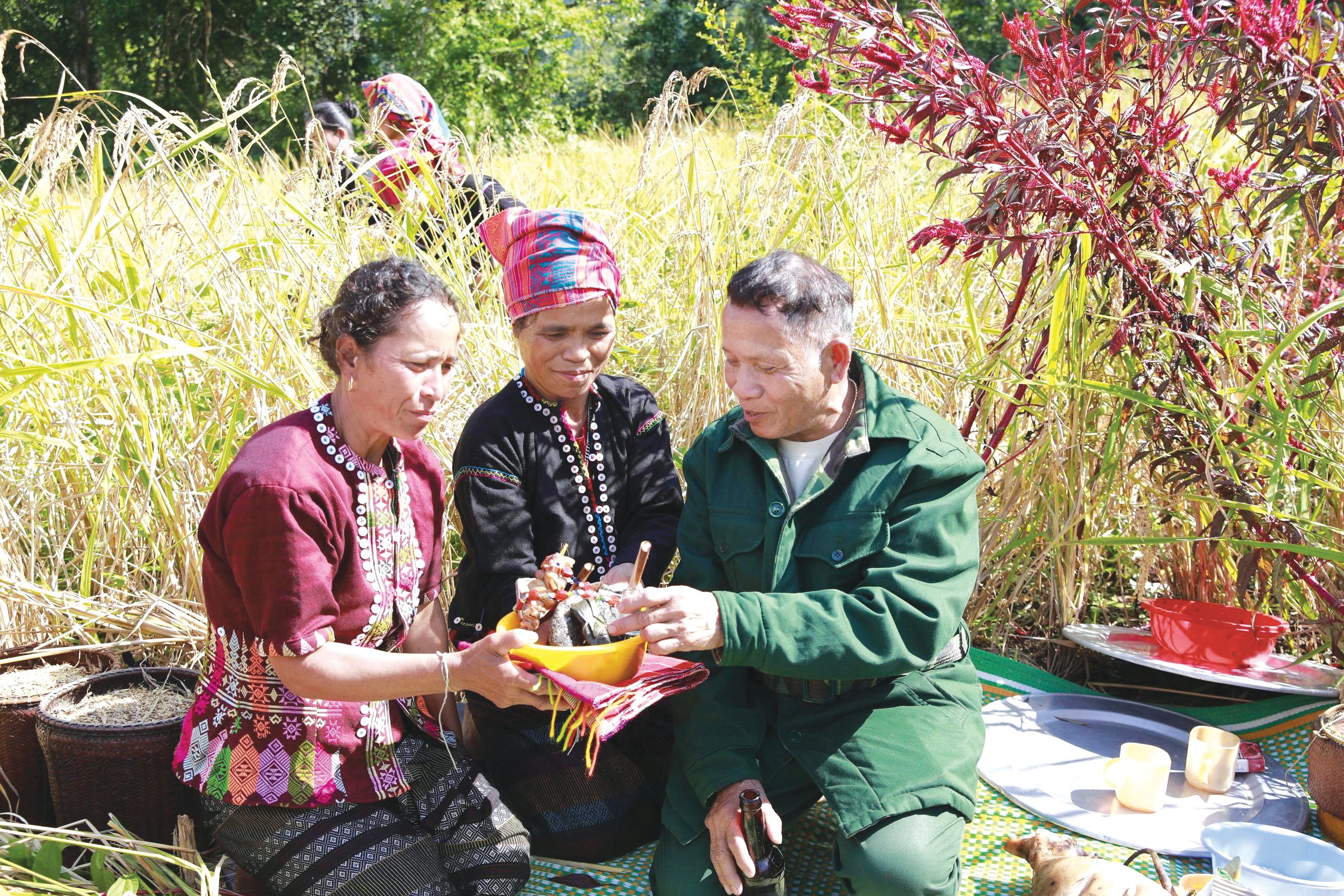 |
| Village elder Ho Van Pu performs a ritual to worship the rice god Gia A Bon - Photo: PTLam |
Upland rice usually ripens around the 10th lunar month, and the harvest takes place over a period of more than a month. For the Van Kieu people, when the rice turns yellow, families will celebrate the Cha Xréh ceremony. In the Van Kieu language, this is a celebration of new rice. The organization of the Cha Xréh ceremony is usually prepared about 2 days in advance. Women will go to the fields to thresh some Bat Trang rice and Krieu sticky rice, bring them home to dry, pound them into rice to cook rice, make sticky rice, make cakes... Offerings must include boiled chicken, ginger and other common products in daily life. Families in the same clan will bring a tray of offerings to the head of the clan's house to worship together, and then have a separate tray of offerings to worship at their own house. For the Van Kieu people, Cha Xréh is an occasion for relatives and friends to visit each other after months of separation...
Wishing for a bountiful harvest
In addition to the annual Cha Xréh ceremony, with upland rice, the Van Kieu people also have an important ceremony called the Piec xa ro ceremony, which in the Van Kieu language means the ceremony to worship the god of rice, Gia A Bon. During the upland rice harvest, each family will choose and save a small, most beautiful patch of rice in the middle of the field, waiting until the end of the upland rice season and choosing a good day to hold the Piec xa ro ceremony.
The Piec xa ro ceremony is usually held by the homeowner in the morning, inviting some close families in the village and relatives in the clan. If the Cha Xréh ceremony takes place in a stilt house, the Piec xa ro ceremony takes place entirely in the fields. The first thing is that everyone will set up an altar in the middle of the field, mainly made of bamboo, called Ra Pe, symbolizing a stilt house. The owner of the field must prepare a live pig of about 20kg to be processed right in the field, along with 2 crabs, 4 eggs, 1 beautiful rooster, sticky rice, A Yu cake made from Kriêu sticky rice and black sesame seeds... In addition, the offerings also include brocade, silver necklaces, agate and silver ingots... And on the altar, the most beautiful ripe golden rice flowers are indispensable.
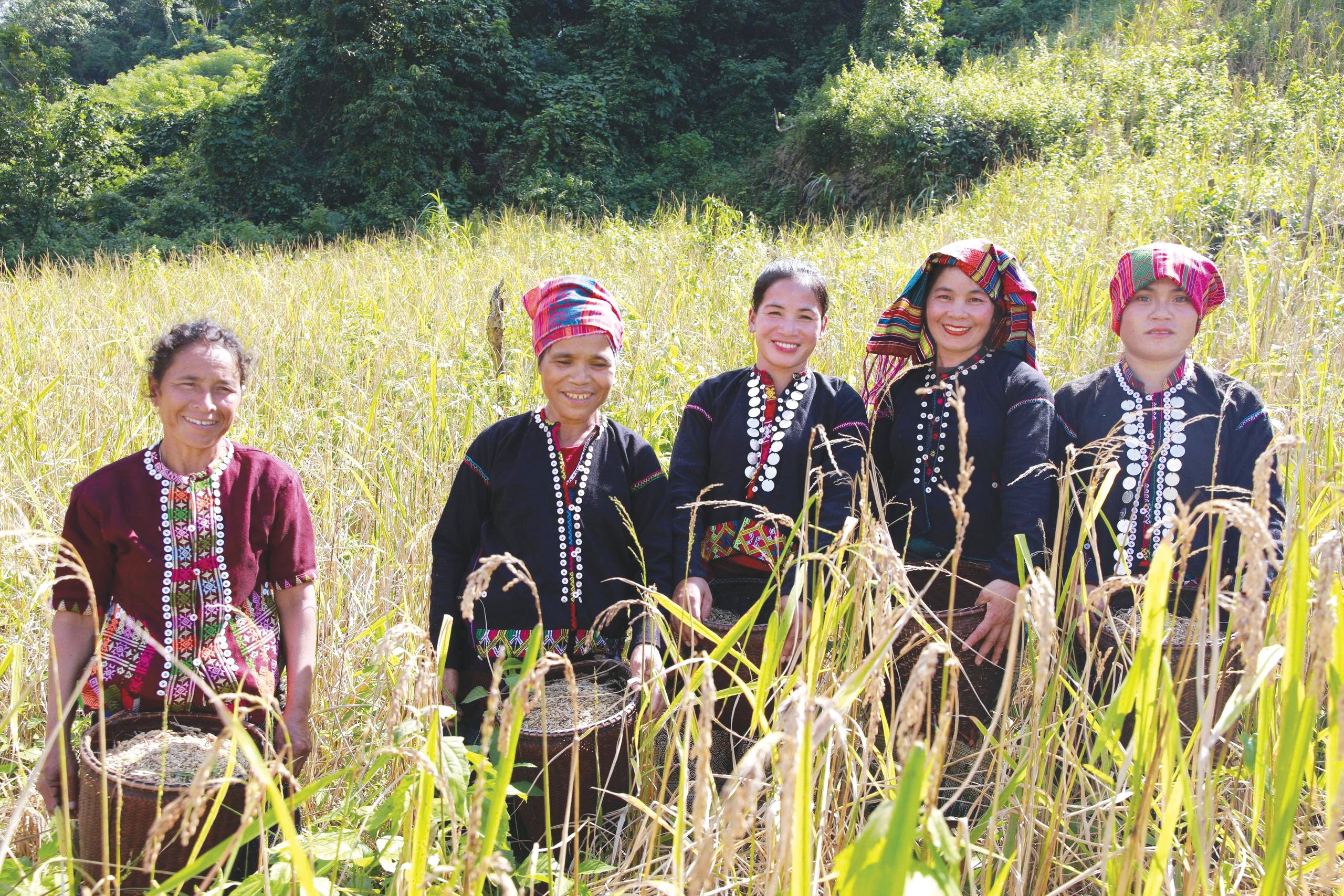 |
| Van Kieu women participate in rice harvesting during the Piec Xa Ro festival - Photo: PTLam |
After arranging the offerings and asking for permission from Giang A Bon, Van Kieu women in traditional costumes will start threshing rice by hand. Ms. Ho Thi Heng, in Trang - Ta Puong village, Huong Lap commune, confided: "Today, we are here to help a family in the village thresh rice to celebrate the Piec xa ro ceremony. We wish your family happiness and good luck and that next year the fields will be better so that there will be more rice." After threshing, the rice will be placed in baskets called A Nhang. The baskets are woven from the trunk of the Ra Lung tree, a tree about 2m high, whose leaves are often used to wrap cakes.
The basket containing rice will be placed at the foot of the altar. At this time, the owner of the field will invite a shaman to pray to the god of rice Gia A Bon and the gods that the year's farming work has been completed with good results. According to village elder Ho Van Pu, currently living in Xa Dung village, Huong Lap commune, said: "Piec xa ro is a very important worship ceremony of the Van Kieu people in the process of farming. This is a worship ceremony to express gratitude to the god Gia A Bon for bringing a bumper crop and to pray that next year the fields will have another good harvest so that the house will be full of rice, and life will be warm and prosperous...".
At the end of the Piec Xa Lo, the parents of the plantation owner will tie the rice soul string around the members' wrists to pray for unity and remind them to help each other overcome difficulties. Especially, the husband and wife of the plantation owner should love each other, share, and work together to build a prosperous life.
Vice Chairman of Huong Lap Commune People's Committee Ho Thi Ven said: "Piec xa ro is a ritual of the Van Kieu people to inform the Gia A Bon rice god that a bumper crop has ended successfully. Currently, the Piec xa ro ceremony is mainly preserved in ancient villages of the Van Kieu people, of which the most typical is Trang-Ta Puong village...".
Nowadays, thanks to the cultivation of wet rice twice a year, the life of the Van Kieu people has basically ensured a local food source. However, some families still maintain the habit of sowing rice on the fields every year. Thus, upland rice is not only a food crop, but also contains a long history, culture and beliefs in the minds of the Van Kieu people, contributing to creating a colorful cultural treasure in the community of ethnic groups in the mountainous region of Quang Tri .
Phan Tan Lam
Source: https://baoquangtri.vn/van-hoa/202511/cay-lua-ray-va-le-piec-xa-ro-cua-nguoi-van-kieu-27154e9/



![[Photo] President Luong Cuong receives US Secretary of War Pete Hegseth](https://vphoto.vietnam.vn/thumb/1200x675/vietnam/resource/IMAGE/2025/11/02/1762089839868_ndo_br_1-jpg.webp)


![[Photo] Lam Dong: Images of damage after a suspected lake burst in Tuy Phong](https://vphoto.vietnam.vn/thumb/1200x675/vietnam/resource/IMAGE/2025/11/02/1762078736805_8e7f5424f473782d2162-5118-jpg.webp)

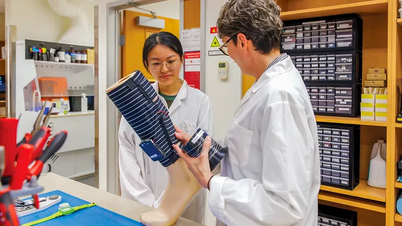



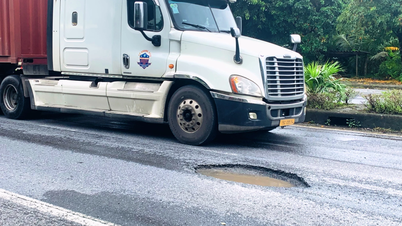


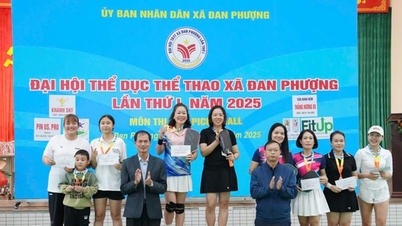






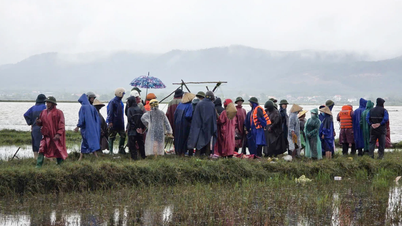
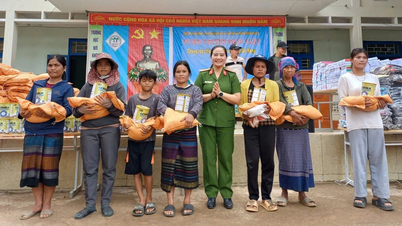

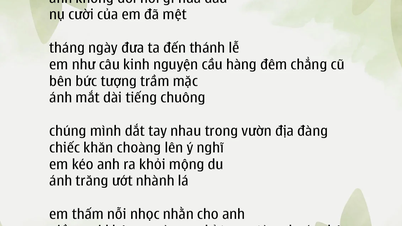
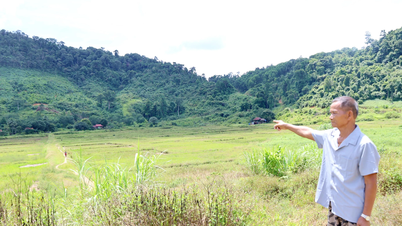







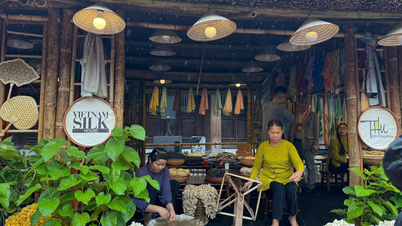




























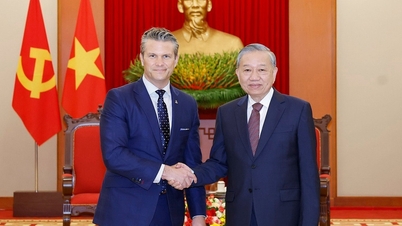

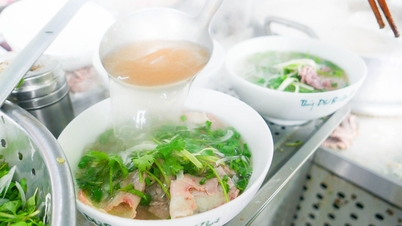

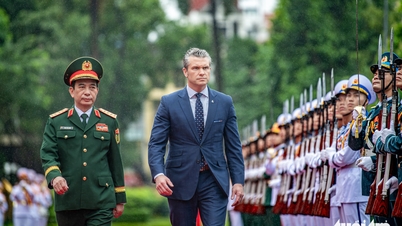





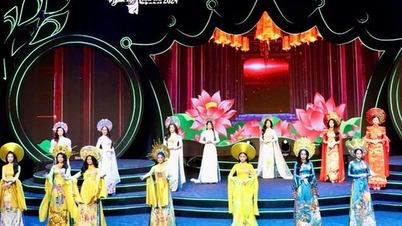


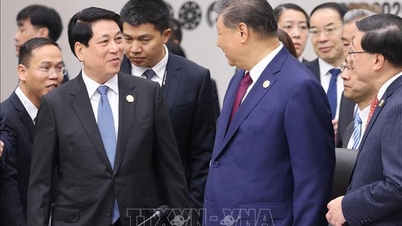


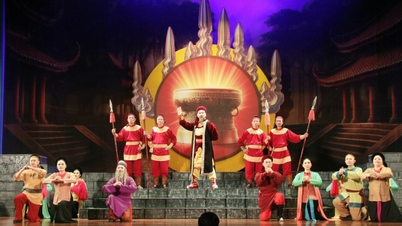





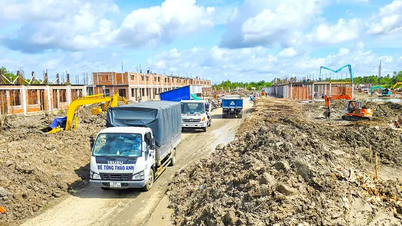















Comment (0)